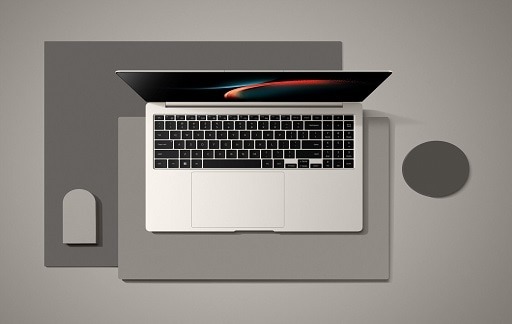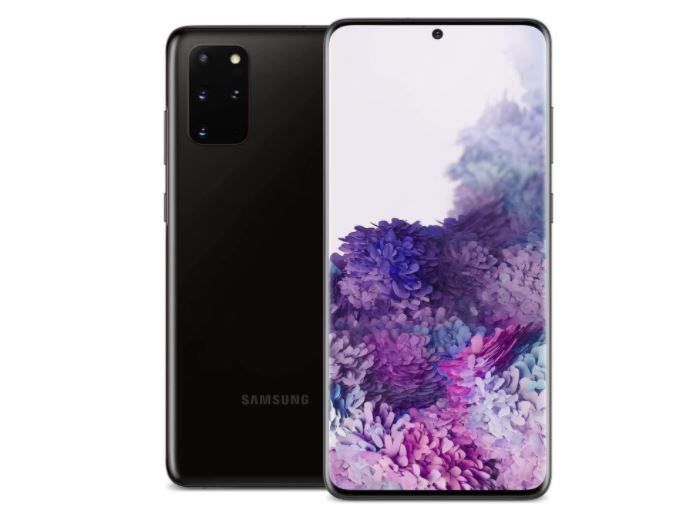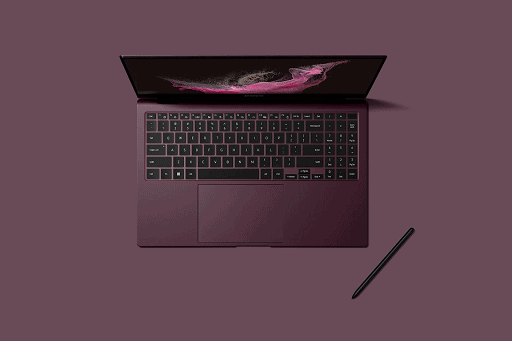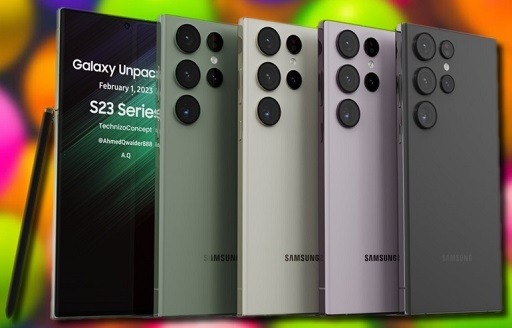The laptops produced by Samsung under the Galaxy Book brand have consistently been among my favorites among other models, despite the fact that they have unquestionably had issues. Even though they were 15.6 inches in size, the AMOLED displays on the Galaxy Book 2 series from the previous year only had a 16:9 aspect ratio and were only capable of Full HD resolution.
Thankfully, the Samsung Galaxy Book 3 Pro addresses a significant number of these shortcomings. The screen has been updated to have a 16:10 aspect ratio, and a refresh rate of 120Hz, and yes, it is still an AMOLED display. Also, it works wonderfully with all of your other Samsung devices. It integrates without any problems with Microsoft Phone Link, and all of your other Samsung applications, like Samsung Notes, are available here as well. One small illustration is as follows. My Samsung Galaxy Buds 2 Pro did not require any pairing on my end. These appeared in the Samsung Settings app, and all I had to do was press the connect button.
Despite the fact that it addressed a number of deficiencies, it also introduced a few of its own. To begin, despite being a 16-inch laptop, it only weighs 3.4 pounds, which is considered to be relatively light. This is made possible by the higher-quality aluminum construction. If you, like me, were a big lover of that component of the design, it’s a bummer that it’s heavier than it should have been. Nonetheless, I think this is an excellent laptop.

Samsung Galaxy Book 3 Pro design
The Samsung Galaxy Book 3 Pro has undergone a comprehensive redesign, and just like any other redesign, this brings with it both positive and negative aspects. Now, rather than the magnesium that could be found in the Galaxy Book 2 Pro, it is constructed out of aluminum instead. It has an unmistakably higher-end look and feel; long gone are the days when you could easily bend the screen and the chassis simply by picking it up.
However, aluminum is a much heavier material, and it is one of the heaviest materials that you will find in a laptop. It is also one of the most expensive materials. This indicates that the Galaxy Book 3 Pro is significantly much heavier. The Galaxy Book 2 Pro with a 13-inch display weighed only 1.92 pounds, while the version with a 14-inch display weighed 2.58 pounds. That’s a significant dissimilarity. A laptop that weighs 2.58 pounds is still considered to be lightweight, and it is actually a little lighter than a MacBook Air. Simply put, it is not ridiculously lightweight like its predecessor was.
The narrative takes a slightly different turn when discussing the 16-inch model. At 3.4 pounds, this laptop is on the lighter end of the spectrum. In point of fact, there are two categories of 16-inch laptops: those designed for individuals who have a requirement for dedicated graphics, and those designed for individuals who have the same requirements as an individual who purchases a 14-inch laptop but desires a larger screen size. Because it is the latter, this laptop does not come with the added bulk and weight that comes with having that additional power.
As a point of comparison, the Surface Laptop 5 has a 15-inch display and weighs 3.44 pounds, while the new LG Gram Style 16 weighs only about 2.71 pounds. On the other hand, the lightest version of Dell’s XPS 15, which weighs 4.22 pounds, begins with a 45W processor and RTX graphics as standard equipment.
So enough with the discussion of height and weight. Let’s talk about the hue that’s been given the name Graphite. That is the traditional gunmetal gray hue, which has been present in a good number of laptops that we have seen. Everything is alright, but it’s just not that thrilling. I have a dream that firms like Samsung will make the same amount of effort to make their personal computers look as sleek as their mobile phones do. There is another color called Beige, which I haven’t actually seen in person.
The Galaxy Book series has undergone a significant revision that includes the reintroduction of ports. As opposed to the models from the previous year, which only had one Thunderbolt 4 port and filled the rest of the available space with USB 3.2 ports, the entire Pro lineup comes equipped with two ports. They are located on the left side of the device, along with the brand-new HDMI 2.0 port. On the right side of this year’s model, you’ll find a microSD card slot, a 3.5mm audio jack, and a USB 3.2 Type-A port, all of which were absent from the model from the previous year.
In terms of its design, the Galaxy Book 3 Pro definitely holds its own, which is something that I appreciate. When I consider it in light of the generations that came before it, however, I can’t help but feel that it’s a great tragedy. The fact that you could get a laptop from the Galaxy Book line that weighed less than two pounds was one of my favorite features of that line.
Samsung Galaxy Book 3 Pro display
Displays with an aspect ratio of 16:10 have been increasingly common in laptops over the past few years. This is one of the reasons why using the display found on the Galaxy Book 2 Pro, which has a 16:9 aspect ratio, was a little difficult. The Galaxy Book 3 Pro from Samsung is an improvement there. In addition to this, the screen sizes have been expanded from 13.3 and 15.6 inches to 14 and 16 inches, respectively. The gradual disappearance of laptops with a screen size of 15.6 inches from the market is a logical progression.
In other words, the screen is far more expansive. Screens are measured diagonally, thus even if they were the same size as before, 15.6 inches, it would still be approximately 11% higher than before since the new aspect ratio would add surface area. Nonetheless, at 16 inches in length, it is still considerably longer than that.
In addition, the resolution has been upgraded to 2880 pixels by 1800 pixels, which is a significant step forward. In earlier incarnations, the sole available panel was an AMOLED display with a resolution of 1920 by 1080 pixels. This was actually a feature that was exclusive to Samsung’s laptops, and it meant that they wouldn’t use as much battery as other gadgets on the market that had UHD OLED displays. It was really easy to see the individual pixels, particularly on the 15-inch models.
You won’t have to worry about having to look at those unsightly pixels any longer. The new panel is still an AMOLED panel, but the refresh rate has been increased to 120 Hz. That’s accurate, OLED displays provide vivid colors, a sharp display thanks to the pixels, and a smooth appearance because of the refresh rate. I can vouch for the fact that it is wonderful.
It is important to take note that the screen is preconfigured to have a dynamic refresh rate that varies between 60Hz and 120Hz. You have the option of manually forcing it to either one or the other, but the objective of the dynamic refresh rate is that it will decrease when you are not actively moving things around, which will result in less battery consumption. Naturally, a dynamic refresh rate like the one in the Galaxy S23 Ultra, which goes between 1 Hz and 120 Hz, is something that I’d really like to see in Windows, but unfortunately, the platform just isn’t there yet.
The color gamut reaches its full potential. It supports sRGB at 100%, P3 at 100%, and NTSC at 96%, as well as 98% Adobe RGB. You absolutely need OLED in order to go into the 90s in all four categories, but even accounting for that, this is an outstanding product.
The brightness reached its maximum of 428.6 nits, which was more than the advertised 400. The contrast ratio is quite strong, reaching a staggering 14,330:1, which is to be anticipated from an AMOLED display.
On the other hand, the quality of the webcam is satisfactory. Even though Samsung made a significant advancement last year by upgrading the resolution to FHD, which more than doubles the pixel count, the quality of their products has not improved since then. It is still a somewhat small sensor, so despite the fact that it is competent, it will still struggle when the lighting is inadequate.
Even Samsung hasn’t gotten on board with facial recognition yet; the company’s Windows Hello app doesn’t have an infrared camera. That doesn’t bother me one bit; I’ve given up even trying to configure facial recognition on brand-new computers. Because it ends up being more of a pain than it’s worth, I usually end up just ignoring it in favor of entering my personal identification number (PIN).
Yet, the screen is a significant step forward nonetheless. Still, I wish Samsung provided people with more than one option. Although the Full HD display on the Galaxy Book 2 Pro wasn’t necessarily a drawback, I feel as though the critics all wished for another choice.
Reasons to buy 13-inch MacBook Pro instead of the MacBook Air
Samsung Galaxy Book 3 Pro keyboard
We have observed that the keyboard on many of the laptops in the Samsung Galaxy Book series is on the shallow side. In spite of the fact that it may take some time to get used to, I found that it was both comfortable and accurate. Nonetheless, if I had to guess, I would say that the depth is approximately 1 millimeter, which is significantly less than the 1.6 millimeters that you would find in something like a Lenovo ThinkPad X1 Carbon.
Naturally, the keyboard features backlighting, and the larger 16-inch version of the Galaxy Book 3 Pro includes a number pad on the right side of the device. Since so many businesses have a number pad on their larger laptops, I’m going to presume that it’s a feature that a lot of people appreciate having. But I’m not interested in that at all. To reiterate, it would be wonderful if Samsung offered a wider variety of choices.
Now that we get that out of the way, let’s discuss how enormous this touchpad is. On this monstrosity, you could park a truck if you wanted to. To begin, I adore having a lot of space on the touchpad. As far as I’m concerned, the larger, the better. I want all of the available real estate to be utilized by businesses.
The only issue is that, as a result of the number pad, it is significantly offset from the center. It appears like the line dividing the left click and the right click is located smack dab in the middle. It feels like the left side of the laptop is too far away from the center when you have to land south of the B key in order to use the left mouse button. The fact that the touchpad is off-centered in addition to the fact that it is so large contributes to the fact that you will have the sensation that you are reaching too far to left-click (if you are right-handed; otherwise, you will have the sensation that you are reaching to right-click). I’ve become accustomed to it, but I still think it’s a problem that can be solved.
Samsung Galaxy Book 3 Pro performance
Core i7-1360P processors and at least 512 gigabytes of solid-state storage come standard in the Samsung Galaxy Book 3 Pro models offered for sale in the United States on Samsung.com. We won’t be running any benchmarks because my machine already has a Core i5-1340P and a 256GB solid-state drive (SSD).
This is the first laptop I’ve used that has a processor from Intel’s 13th generation, and it’s also one of the first models that XDA has evaluated. Regarding the feel of the processor, I believe that the 13th-generation P-series Core i5 feels very similar to the 12th-generation P-series Core i7, which is a nice improvement of a more modest nature.
The majority of my time on this laptop was spent performing productive work in various browsers. Obviously, I earn a living by writing articles, and in my more recent role at XDA, I use a great deal more browser-based services for a diverse range of tasks. In addition, I edited photos with Adobe Lightroom Classic and Photoshop, and both programs worked without any issues. If you want to edit video, you should consider purchasing a Samsung Galaxy Book 3 Ultra because it will have an RTX graphics processor and a 45W processor.
The majority of the time, I was blown away by how long the battery lasted. I used the product as I normally would, with the power slider set to provide the highest possible performance and the display set to approximately fifty percent of its full brightness. Battery life ranged from three hours and twenty minutes (three hours) to five and a half hours (555 minutes) (nine hours and 15 minutes). On two other occasions, I was able to get over seven hours, and on three additional occasions, I was able to get over six hours. There was one other occasion in which I was unable to complete the task in three hours. The total amount of time I got was 377 minutes, which is equivalent to six hours and 17 minutes, which is fantastic.
The standby battery life wasn’t nearly as impressive as the active battery life. In one scenario, it fell by 49% in 608 minutes, whilst in another scenario, it fell by 49% in 558 minutes. When you need to carry a laptop around with you but it doesn’t have enough battery life, it may be a big hassle. While I wasn’t using the laptop, I noticed that I had to manually shut it down, which is something that shouldn’t be necessary.
Having said that, this pertains to Intel. The manufacturer of chips just does not yet have power management mastered.
Galaxy Book 3 Pro features
In the past, Samsung has mentioned to me that the company wants its laptops to function as the ideal devices for users of Galaxy smartphones. This is a common desire because everyone wants what Apple has: an ecosystem that enables the OEM to forge a better experience by owning the whole stack, which also makes it harder for people to leave the ecosystem. Apple has this ecosystem, and everyone else wants it too.
Being the company that sells the most smartphones worldwide puts the Korean company in a position to be successful in this endeavor. As a consequence of this, you will discover quite a few Samsung applications on this laptop, such as Samsung Notes, Samsung Pass, Samsung Studio Plus, Samsung TV Plus, Screen Recorder, Samsung Flow, Second Screen, Samsung Gallery, Samsung Settings, and many more.
That’s a lot of apps, but the benefits that come from using them are substantial. To begin, everything operates smoothly. My Galaxy Buds 2 Pro was immediately visible within the Samsung Settings app after being paired. After I pressed the connect button, they automatically became paired with one another; I did not need to do any further work. In addition, the Galaxy Buds app that was supposed to update the firmware was removed from the Microsoft Store because the app did not have the necessary level of reliability to carry out the update.
If you have a Galaxy S Ultra, you absolutely need to take advantage of Samsung Notes. Considering that it is not a particularly popular application for taking notes, it stands to reason that if you have made an investment in it, you will want a personal computer (PC) that has it.
The video editor Samsung Studio Plus is quite impressive. Even though it’s not Premiere Pro, it’s still a pretty cool app, especially considering that Microsoft gave up on its own video editing ambitions years ago with Windows Movie Maker and is now pushing Clipchamp, which isn’t the best option for an average user who just wants to trim some family videos. It is also able to pull video clips from the Samsung Gallery app, which makes use of OneDrive as its backbone in order to synchronize photos and videos between your personal computer and your Galaxy smartphone.
Since December of last year, Samsung has been heavily promoting a feature known as Second Screen. It’s fairly simple: If you have a Samsung tablet, you can set it up to function as a wireless second monitor in your computer setup.
And let’s not overlook all of the benefits that come with using Microsoft’s Phone Link, shall we? You can obviously use it to make phone calls and send messages from your computer, but in addition to those functions, you can also use it to view images and mirror your screen. The fact that you can use it to copy and paste content from your Galaxy phone and vice versa is one of its most impressive features.
One last item I want to talk about is Quick Share, a feature that allows you to easily transmit images, movies, and other things from one device to another. Hence, if you capture a video in 4K at 60 frames per second on your Galaxy S23 Ultra and then need to access it on your personal computer, you may instantly and wirelessly upload it to your computer.
Samsung Galaxy Book 3 Pro price and availability
The Samsung Galaxy Book 3 Pro was introduced on February 1 during an event called Unpacked; preorders have been available ever since, but the product won’t start shipping until February 17. The 14-inch model starts at $1,449, while the 16-inch model, which is the one I’m evaluating, is $100 more expensive.
Although it is more expensive than its predecessor, the basic model is quite robust, which is typical of products sold in today’s market. It features a 512GB solid-state drive (SSD), 16GB of Memory, and an Intel Core i7-1360 processor.
Would you like to read more about CRM Software-related articles? If so, we invite you to take a look at our other tech topics before you leave!










